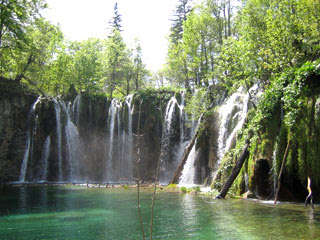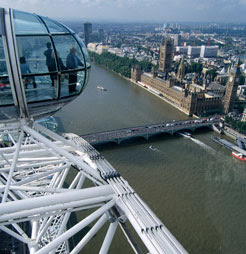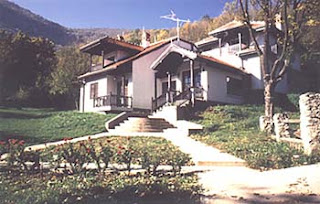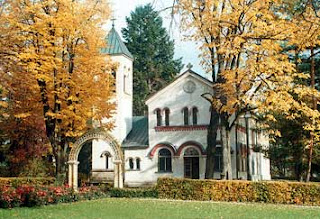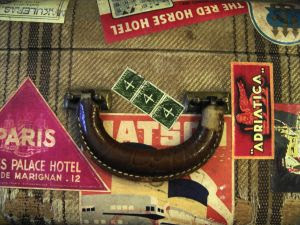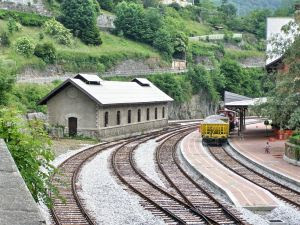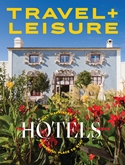Kopaonik is the largest mountain in Serbia, more then 100 km long. Its highest peak is Suvo Rudiste (also called Pancic's Peak) at 2,016 m above sea. The duration and quality of snowfall and ideal skiing grounds have been attracting a rapidly increasing number of guests.
Kopaonik was declared a national park in 1981. The national park spreads on 12,000 hectares. A vast high mountainous and relatively flat region at an altitude of about 1,700 meters forms the basis of this national park. This central Kopaonik plateau is called Suvo Rudiste. It is surrounded by mountain peaks. To the north and northwest of this plateau stretches Banjski Kopaonik below which is the well-known Josanicka Banja spa with its strong springs whose waters reach the temperature of 88 degrees Celsius. Directly below the Suvo Rudiste plateau starts the attractive and picturesque valley of the Samokovska River, characterized by its steep run, numerous rapids, falls and gorges.
Kopaonik's flora is characterized by a large number of autochthonous plant species (the Balkan beech, fir, spurce, yew, several kinds of maple, pine and oak). The fauna is also diverse but its concentration varies, depending on the quality of the habitat.
This mountain has enormous resources for the development of tourism. The entire park is characterised by its extraordinary natural beauty: vast expanses of grassland, picturesque forests composed of a wide variety of tree species, beauty spots, deep river gorges. The snow blanket lasts a long time on this mountain and in view of its good relief, there are excellent conditions for the further expansion of winter tourism there.
The tourist resort on the Kopaonik includes hotels, rest houses, ski lifts, excellent ski slopes and many other tourist facilities.
The Kopaonik is well-connected with the main transport routes in Serbia. The central part of Kopaonik with the tourist center and ski slopes is linked with the Ibar Highway by a modern tarmac road. The nearest airport is in Nis.
Kopaonik climate
As regards climate, Kopaonik significantly differs from the neighboring mountains, a fact which can be seen from the meteorological records for Raška, Kosovska Mitrovica and Ravni Kopaonik. The first lies at an altitude of 417m, the second at 526m and the third at 1710m above sea level. The first two have very similar temperatures, which is a result of their being located in a valley at a lower altitude. In Raška the median yearly temperature is 10.7°C, in Kosovska Mitrovica 10.5°C and on Ravni Kopaonik only 3.7°C. The January temperatures at the three meteorological stations are -0.4°C for the first, -0.2°C for the second and -5.2°C for the third. The shifting of the temperature maximum of Ravni Kopaonik to august indicates it has a sub-alpine climate. The winter temperatures on this mountain are not very low as a result of its southern position, flatness and wide-open terrain, which prevent the piling up of clouds and cold air and facilitate ventilation. The cold winter air is heavy and moves through the neighboring valleys and ravines. Spared a long-lasting cloud cover, Ravni Kopaonik is exposed to the sun for a longer period of time in winter, making it warmer than might be expected in Naturally, this is "wintry" sunshine, so the snow does not melt for five months (its duration is a average 159 days a year). This is why the ski season is long and stable here.
With 200 sunny days a year (in Suncana Dolina), this mountain seems to have been made for a resort with plenty of fresh air. Thus city dwellers enjoy coming here both in summer and in winter. In July and August negligible amounts of rainfall come in short-lasting showers, after which the weather is fine again. Therefore, during the winter and summer tourist seasons, which bring in the largest number of visitors, there is little precipitation. Such a climate has a great effect on health, a fact that is acknowledged by the experts as well.

Waters, thermo-mineral springs and spas
Kopaonik would not be so attractive had nature not be quested it with an abundance of cold, radioactive and thermo-mineral waters.
Walking through the tall grass of the Kopaonik meadows, one often steps into a brook or pillowy bog, which sprays the passer-by like a sodden sponge, which had been pressed. When all these creeks and rivulets come down from Ravni Kopaonik to the foothills and flow into the Jošanica, Samokovska or Graševacka rivers, they begin to foam, rumble and thunder. Only this eternal mountain roar reaches the absolute quiet of the fir and spruce forests and the seemingly monotonous pastures. Climbing down to one of these piedmont rivers, one notices a multitude of cevrntije-giant stone cauldrons with whirlpools of foaming water. Frequent watermills and an occasional rolling mill complete with weir, sluice and water wheel, add to the vividness of the attractive foothills scene.
Quite a few radioactive springs are hidden above all these streams, rivulets and their sources. Some of them cling to the very tops of the mountain-Krcmar Voda emerges at 1950 meters above sea level, just below Pancicev Vrh (Pancic's Peak); Marina Voda at 1700 meters; Pajino Preslo and Kaznovske Bacije at almost the same altitude. Every one of these springs has more then 11.5 Mach units of radioactivity. Krcmar Voda, with 74 Mach units, is the most radioactive spring in Yugoslavia. Very cold and slightly mineralized, this water is a particular natural asset of Kopaonik.
Many thermo-mineral springs are found in the foothills of Kopaonik and at places of marked fissuring-in Jošanicka Banja, Bogutovacka Banja, Lukovska Banja and Kuršumlijska Banja, to mention but a few of the nearest thermal springs. "Following Velika Cesma in Vranjska Banja (92°C), the second hottest spring in our country is the main spring in Jošanicka Banja (78.5°C). The springs are curative…" The water of Jošanicka Banja is used for treatment by bathing, drinking, gargling and inhaling.
Lukovska Banja, a natural spa well know since the Roman age lies in the eastern piedmont of Kopoanik, at an altitude of 700m above sea level. It boasts eight springs with alkaline mineral water, whose temperature varies from 36°C to 56°C. Mud baths with a temperature of 37.5°C are also used for therapeutically purposes.
Kuršumlijska Banja, south of Kuršumlija, also in the eastern piedmont of Kopaonik, is a health spa "with one spring bordering upon another". There are ten springs of sulphurous water there, their temperatures being from 38°C to 57°C. Another produces alkaline mineral water of 30°C.
Bogutovacka Banja lies on the left bank of the Ibar and not directly below Kopaonik itself. However, it is very close to the mountain and its got water coming to the surface is a consequence of tectonic movements in the wider Kopaonik region. It has three springs of slightly sulphurous and radioactive, hypothermal water, with a temperature of 24.7°C.
We have mentioned only those thermo-mineral springs and spas which are situated either in the foothills of Kopaonik or very close by. Other well-known spas lie within a radius of 50 kilometers: Vrnjačka Banja, Mataruška Banja, Novopazarska Banja as well as many small thermae that have not yet been developed.
All the natural splendor of Kopaonik is not yet well-known or sufficiently exploited. The mountain is noted for its abundance of strawberries, blackberries, raspberries and bilberries. The eastern slopes of Rendara and the northern sides of Pancicev Vrh have miles of bilberry groves, which bring scores of people out from the nearby villages to pick the fruit in August. In the last ten years or so, Kriva Reka, the highest village on Kopaonik (about 1250 meters above sea level) has become better known due to the cultivation of raspberries and currants.
Because of all these natural characteristics and beauty, the great Yugoslav scientist, Josif Pancic, was especially fond of Kopaonik. He climbed it sixteen times-the last time at the age of 72. Enjoying the splendors of Kopaonik, on several occasions he expressed his wish to be buried there. His wish was fulfilled only in 1951 when his remains were transferred and buried on the highest peak, which was named after this great man (Pancicev Vrh-2017m above sea level). The founder of the Serbian Academy of Sciences, a man who explored and admired this mountain for so long, now lies there forever.
Source: Dr Milorad Vasovic
"Planina sunca i snegova"
Turisticki savez Srbije, 1982.
Kopaonik Information and Accommodation
Hotel "Grand" (****)
36354 Kopaonik
Phone: +381 36 71027, 71010
Hotel "Jugobanka" (**)
36354 Kopaonik, Suvo Rudiste
Phone: +381 36 71040
Hotel "Junior" (**)
37225 Brzece
Phone: +381 37 825051, Fax: +381 37 823033
Hotel "Olga Dedijer" (***)
36354 Kopaonik
Phone: +381 36 71033, Fax: +381 36 71125
Hotel "Putnik" (***)
36354 Kopaonik
Phone: +381 36 71030, 71038, Fax: +381 36 71038
Hotel "Putnik klub A" (****)
36354 Kopaonik
Phone: +381 36 71600, Fax: +381 36 71606
Hotel "Srebrnac" (**)
36354 Kopaonik
Phone: +381 37 827744, Fax: +381 37 827711
Apartment Complex "Investbanka" (****)
36354 Kopaonik Suvo Rudiste
Phone: +381 36 71301
Apartment Complex "JAT" (****)
36354 Kopaonik
Phone: +381 36 71013
Apartment Complex "Konaci suncani vrhovi" (****)
36354 Kopaonik
Phone: +381 36 71977, 71010
Apartment Complex "Kopaonik" (***)
37225 Brzece
Phone: +381 37 833130, Fax: +381 37 833199
Apartment Complex "Nebeske stolice" (****)
36354 Kopaonik
Phone: +381 36 71247
Apartment Complex "Ragione"
37225 Brzece
Phone: +381 37 827707, Fax: +381 37 827707
